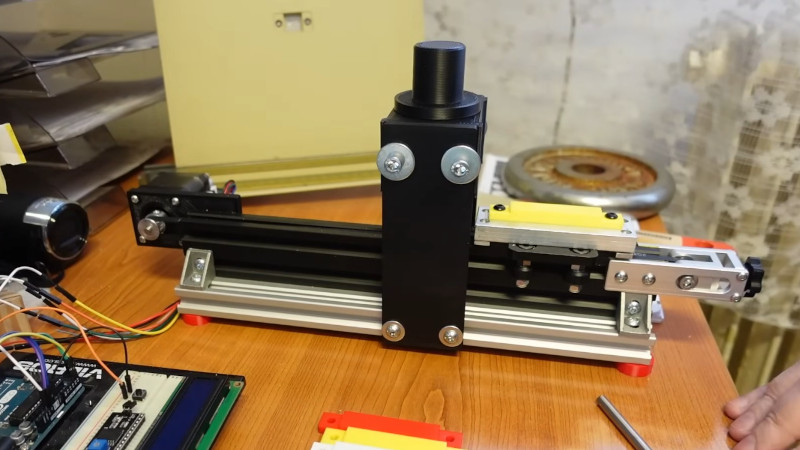Over the couple of decades or so since it started to be available at an affordable level, 3D printing has revolutionized the process of making custom objects. But as anyone with a 3D printer will know, sometimes the materials don’t quite live up to the application. There is a huge variety of available filaments to help make better prints, but which one really is the most hard-wearing? [My Tech Fun] set out to measure the resistance to wear of a variety of different 3D printed materials.
The test takes a standard print made across a variety of different materials, and several of each using different manufacturers’ offerings. These are then put on a test rig that moves backward and forward twice a second, with the test piece rubbing against a steel shaft under pressure from a 2.5 kg weight.
As might be expected, the common and cheap PLA performed the worst while PETG, PA, and TPU performed the best. But for us the interesting part comes in the variance between brands; the best PLA sample outperforms the worst ABS and nearly equals the worst of the PETG. Proof that maybe you do get what you pay for.
The whole test is well worth a watch, and if you 3D print anything that might be subjected to mechanical stress you should find it to be of interest. If comparing filaments is something you’d like to see more of, we’ve featured some tests before.

















It would be nice to see filament manufacturers publish a comprehensive, controlled, standardized test results for their filament.
Seriously, why don’t they do this?
Too many variables.
You can find material properties for the base material (e.g. PLA).
Printed parts are always going to be mechanically inferior to injection molded parts, even ignoring Z axis delamination. Molten plastic is a _compressible_ liquid.
How inferior? Depends on printer and settings. And injection molding settings. And the mood of the 3d printing devils.
You could standardize. Using a standard printer, settings, nozzle and program. But then you have to explain all that. People would bitch when they don’t get the expected values.
I understand, but standardized tests have tolerances and are repeatable within those. It would indeed need to be explained and documented to the tits.
When people start bitching, that’s an education moment. It would overall increase the wisdom of the maker movement.
Argument 1: As HaHa says: it depends very much on the processing.
Pellet pressure is even more extreme.
Argument 2: Unlike SLS, there are virtually no standardised tests for FFF. There are for classic building materials, but a stress-strain diagram for plastics can be produced, but the repetition scatters more clearly than with metals, for example, especially if the production of the test specimens has an influence on the results. Are they printed? Do you mill them? Do you punch them? Even pure copper is a problem because it is like wax and the surface treatment is “fun”.
And what are you testing? The filament (before re-melting) or the printed test body, because you want to know what the printed body can withstand?
With plastic filaments, you don’t even know whether the material from the same manufacturer is identical from batch to batch if it is made from recycled material, for example. So what should he specify? Most manufacturers had specified a different Young’s modulus than we had then measured – regardless of the fact that this value only makes sense for isotropic materials – no FFF print is isotropic, even with 100% infill – under the microscope and in the CT you can see the structures that the slicer already creates.
Until industry-wide standards have been agreed and legal certainty (which entails costs) has been created, you have to be sceptical about the values given.
And what these values mean in your context is another matter. The abrasion test here only makes sense where abrasion is important.We also print materials that are flexible.Abrasion would be of secondary importance here.
“the best PLA sample outperforms the worst ABS and nearly equals the worst of the PETG”
Then the sun came out and it melted.